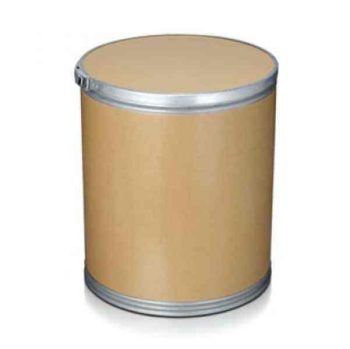Food Grade Thermostable Alpha Amylase Starch Hydrolysis For Ethanol Industry
Introduction
The thermostable alpha-amylase is produced by submerged fermentation of Bacillus licheniformis followed by purification and formulation. High-temperature resistance of the enzyme makes it possible to liquefy starch and reduce viscosity while gelatinization, which brings lots of benefits for starch sugar processing and related industries. High Temperature State Amylase, with excellent heat resistance, is widely used in the industries of starch sugar (glucose, maltose, dextrin, fructose, oligosaccharide), alcohol, beer, monosodium glutamate, brewing, organic acid, textile, print, dyeing, paper making and other fermentation industries.
Definition Of Unit
1 unit of High-Temperature α-Amylase equals to the amount of enzyme which liquefies 1mg of soluble starch to dextrin at 70℃ and pH 6.0 in 1 min.
Characteristics
| Declared Activity | 40000 u/g |
| Production Organism | Aspergillus niger |
| Physical Form | Liquid |
| Color | Brown. Color can vary from batch to batch. Color intensity is not an indication of enzyme activity. |
| Odour | Normal microbial fermentation odour. |
Specifications
| No. | Items | Index | |
| 1 | Bulk density/(g/ml) | 1.05-1.20 | |
| 2 | pH/(25℃) | 3.5–5.5 | |
| 3 | Lead/(mg/kg) | ≤5.0 | |
| 4 | Arsenic/(mg/kg) | ≤3.0 | |
| 5 | Total viable count/(CFU/mL) | ≤50000 | |
| 6 | Coliform Bacteria/(CFU/mL) | ≤30 | |
| 7 | Escherichia coli (CFU/mL) | ≤10 (MPN/mL) ≤3.0 | |
| 8 | Salmonella/(25mL) | Not Detected |
Recommended Dosage
For beer industry: The recommended dosage is 0.2-0.5L of the enzyme preparation per ton of total raw materials, added at liquefaction. However, the optimal dosage depends on the composition of the raw materials and the specific process parameters and should be determined by testing different dosages at the brewery. For alcohol industry: Add this enzyme 0.3-0.6L per ton of total raw materials with pH 5.5-6.5, keep temperature at 85-90℃ for around 120 minutes. For starch sugar industry: Add this enzyme 0.4-0.5L per ton of dry starch after pH adjustment. The liquefaction temperature can reach to 100±5℃ and then keep temperature at 95-97℃ for 60-120 minutes.
Package And Storage
Packaging
Packaging specification: 1 kg / bag.
Storage
| Best Before | When stored as recommended, the product is best used within 6 months from the date of delivery. |
| Shelf Life | 6 months at 25℃, activity remains ≥90% 12 months, activity remains ≥80%. Increase dosage after shelf life. |
| Storage Conditions | This product should be stored in a cool and dry place in a sealed container, avoiding insolation, high temperature, and damp. The product has been formulated for optimal stability. Extended storage or adverse conditions such as higher temperature or higher humidity may lead to a higher dosage requirement. |
Safety
Enzyme preparations are proteins, which may induce sensitization and cause allergic-type reactions in sensitized individuals. Prolonged contact may cause minor irritation for skin, eyes, or nasal mucosa, so any direct contact with the human body should be avoided. If irritation or allergic response for skin or eyes develops, consult a doctor.








